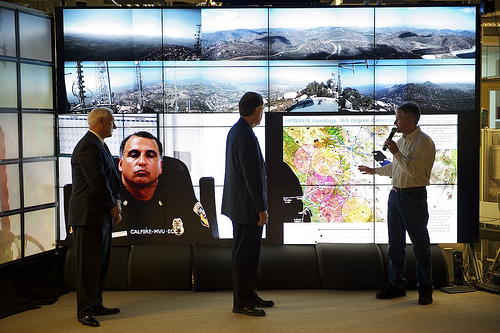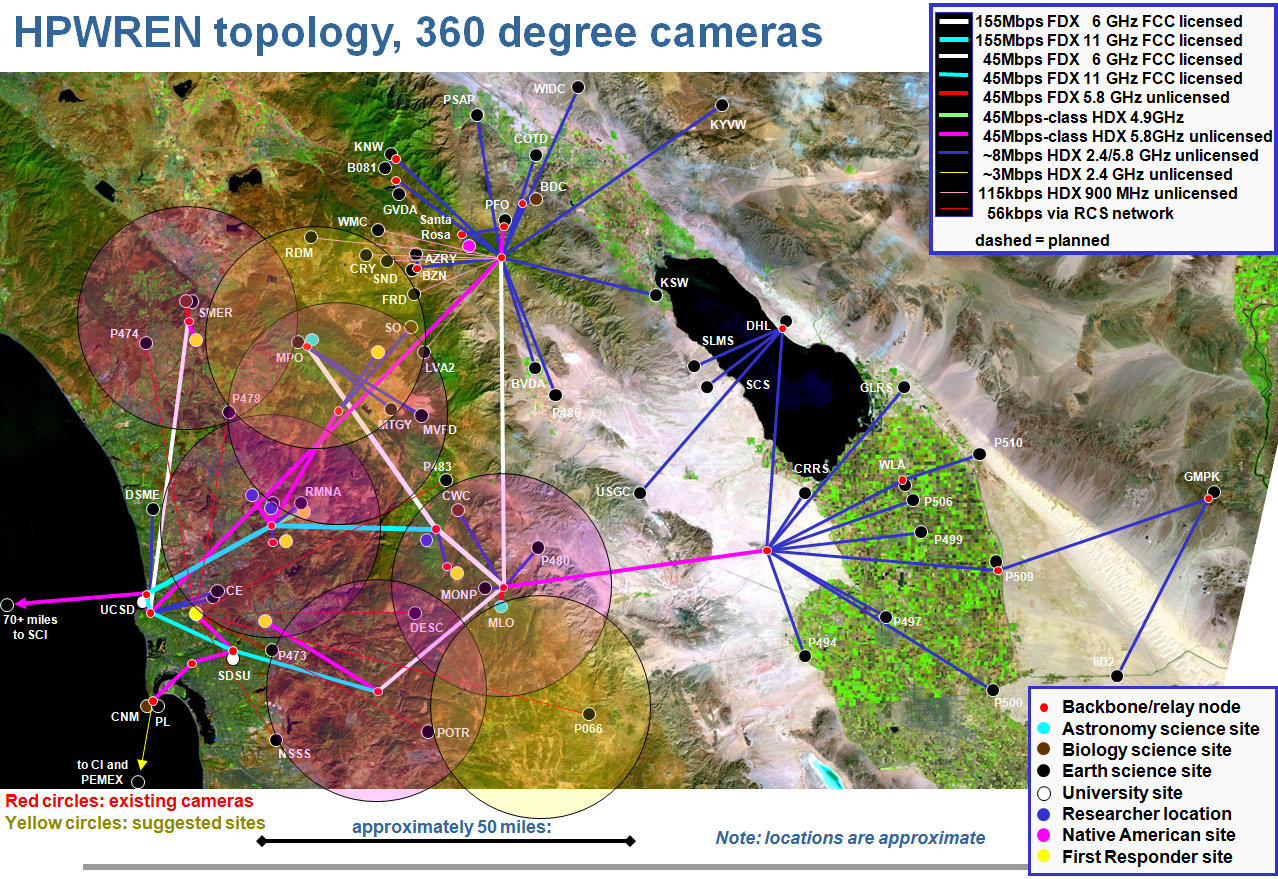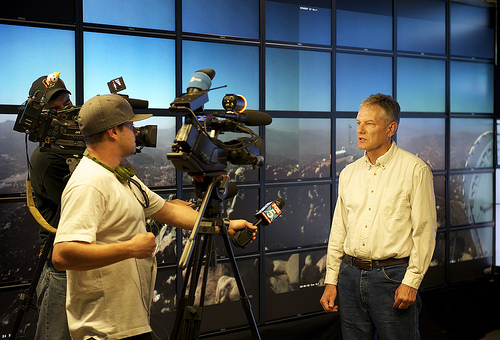San Diego County and CAL FIRE Team with UC San Diego Researchers on Early Fire Detection System
San Diego, Oct. 26, 2010 -- Researchers from the University of California, San Diego have installed 16 cameras on Mount Woodson and Red Mountain to provide 360-degree coverage extending for miles from those peaks to make it easier and faster to detect or monitor wildfires in unincorporated areas of San Diego County. The FireSight project extends the UCSD-based High Performance Wireless Research and Education Network (HPWREN) in areas where fire officials saw the greatest need.
|
In mid-September the Board of Supervisors appropriated roughly $36,000 in funding from the Neighborhood Reinvestment Budget, and the first additional sets of megapixel network cameras are now operational – just in time for the heart of the fire season.
At a news conference Tuesday at the California Institute for Telecommunications and Information Technology (Calit2), UC San Diego researchers, Supervisor Roberts, and Howard Windsor, chief of the California Department of Forestry and Fire Protection (CAL FIRE) briefed reporters on how the early fire detection and remote monitoring system enhance the region’s ability to detect and fight fires. Each of the cameras deployed on Mt. Woodson (2,800 feet) and Red Mountain (1,600 feet) feeds an image to HPWREN’s public website, and each is refreshed approximately every two minutes with an updated image.
|
According to CAL FIRE’s Windsor, the eight cameras deployed on Mt. Woodson and a similar number on Red Mountain (near Fallbrook) will give his team greater visibility in a large, rural area where the terrain and distances make it difficult to maintain firefighters on the ground all the time.
|
The FireSight system grew out of discussions between Calit2 and San Diego County about ways to use technology to combat wildfires. The cameras and meteorological stations are a step in the right direction, and Calit2 director Larry Smarr says that the partnership itself bodes well for future innovations to improve disaster response.
|
While the FireSight project targets fire protection, UC San Diego researchers believe that the partnership with the County and California state agencies will eventually go beyond fire detection, to formalize other collaborative activities with the university. Supervisor Roberts, who represents the Fourth District, also recognizes that FireSight is just the beginning of a long collaboration.
|
The FireSight briefing for the media took place at Calit2 on the UCSD campus. Using the highest-resolution display system in the world (over 315 million pixels), the HIPerVerse allowed reporters to see feeds simultaneously from all 16 cameras deployed as part of FireSight. The technology also allowed CAL FIRE unit chief Windsor to participate remotely in the briefing via videoconference from the Emergency Command Center at Monte Vista (El Cajon). HPWREN’s Braun also showed a compilation of network camera feeds from the 2007 Harris fire.
Note to Editors: 20-second video clip of deployment of cameras on Mt. Woodson and Red Mountain can be downloaded in multiple formats from here: Separately, a compilation of camera feeds from other HPWREN installations chart the progress of the 2007 Harris Fire; those time-lapse videos can be downloaded here.
Related Links
San Diego County Board of Supervisors
HPWREN
HPWREN Camera Page
Calit2
CAL FIRE
SDSC
Media Contacts
Doug Ramsey, Calit2, 858-822-5825, dramsey@ucsd.edu; Nick Schuler, CAL FIRE, nick.schuler@fire.ca.gov; Tim McClain, SD Board of Supervisors, 619-531-6454, tim.mcclain@sdcounty.ca.gov





